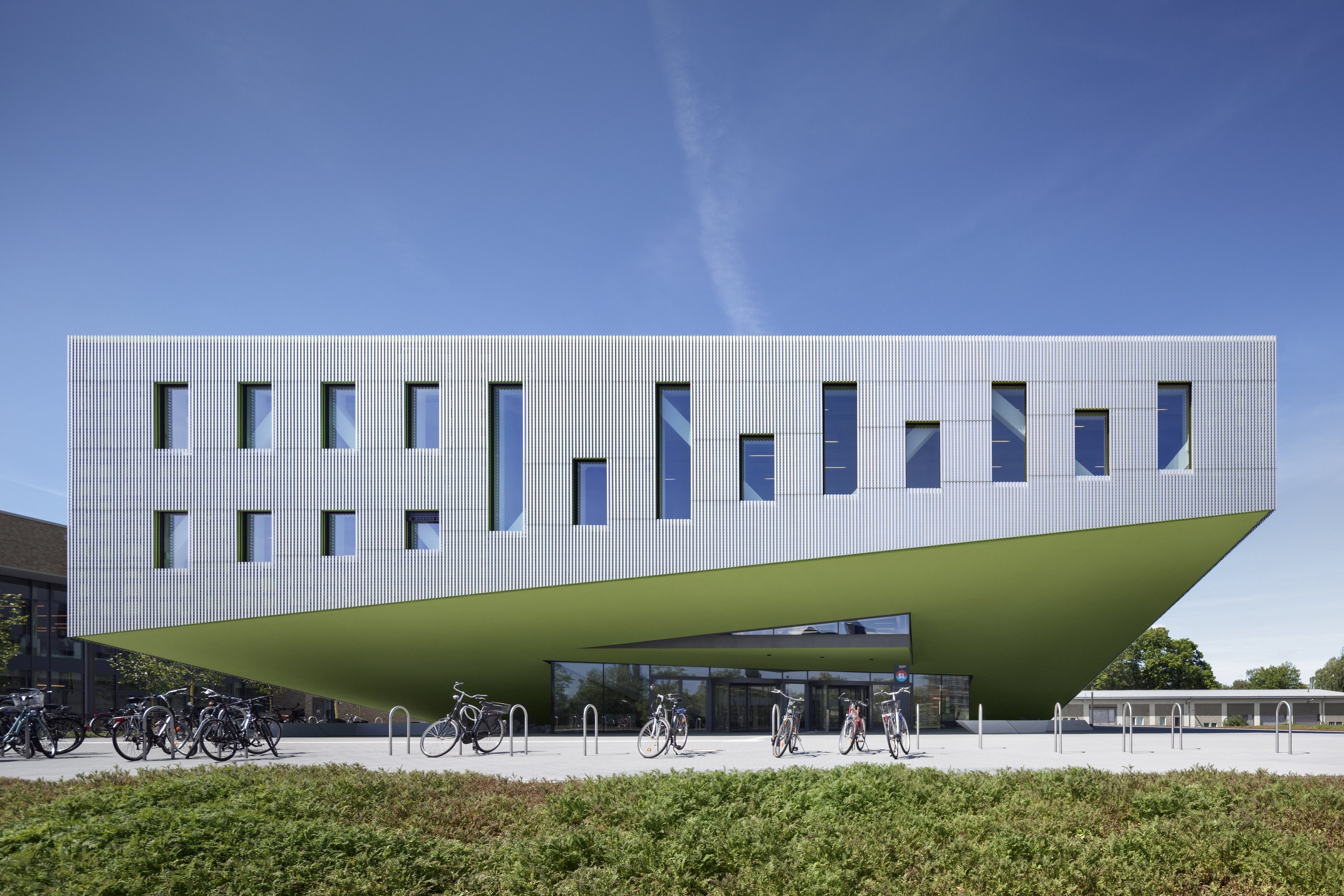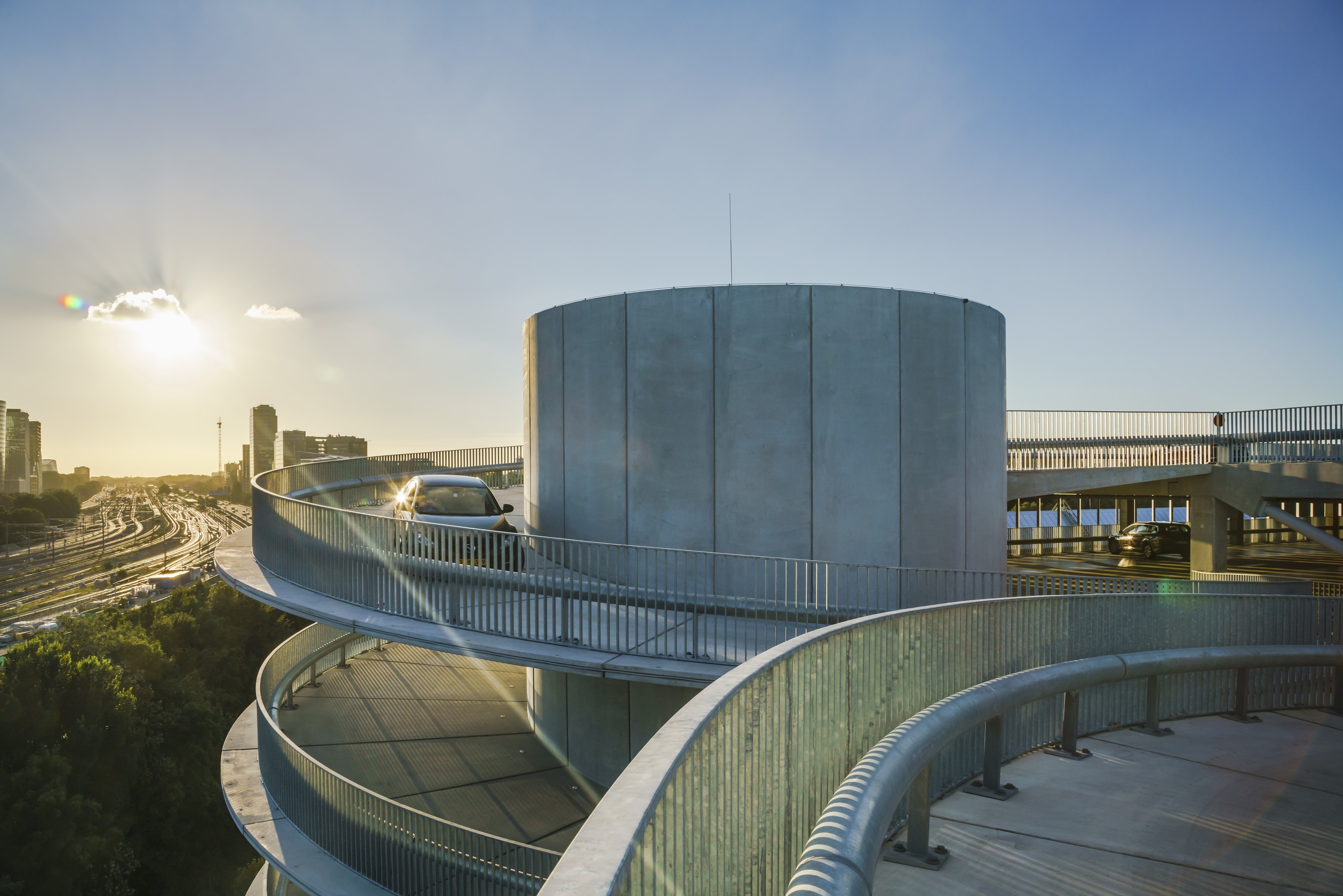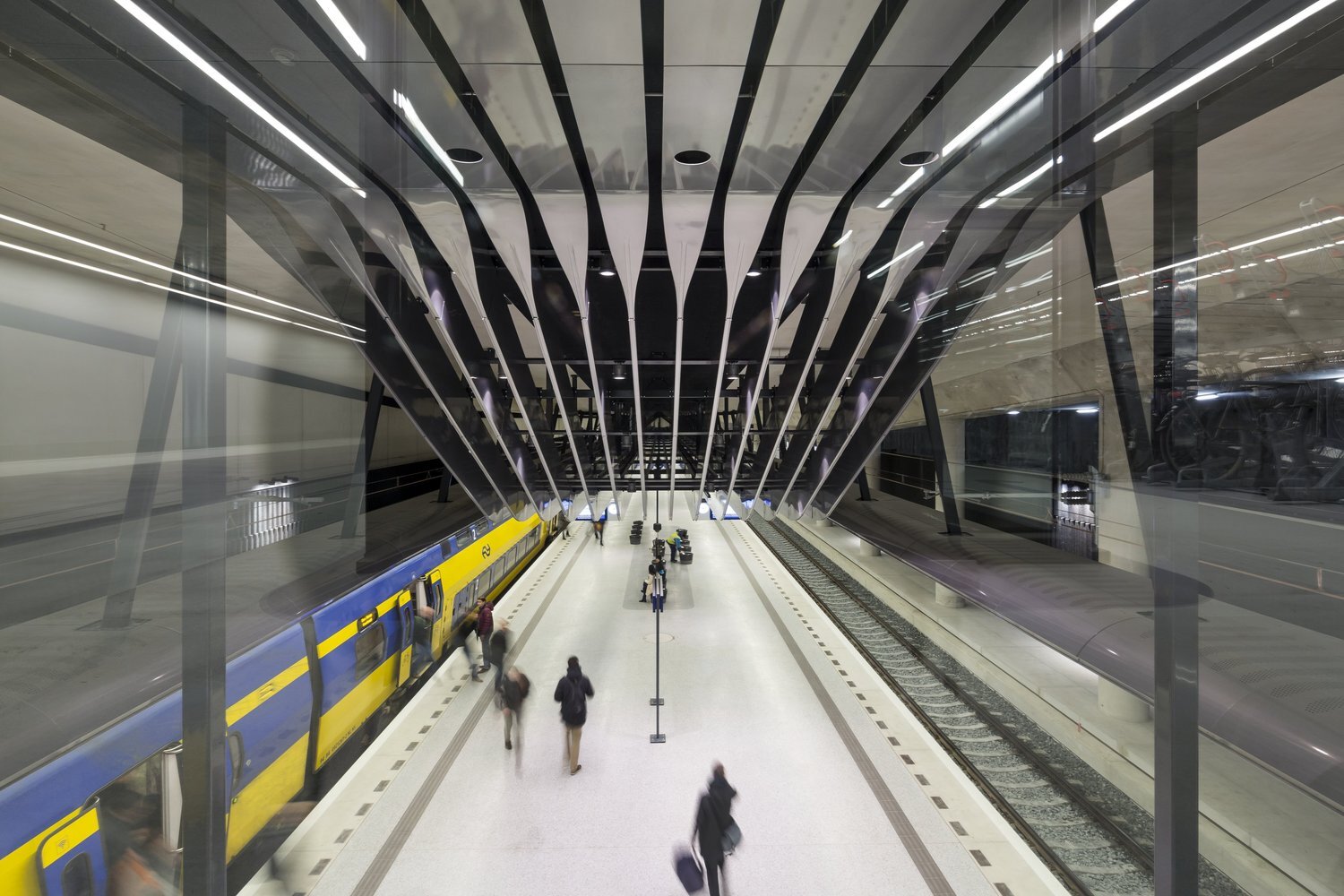Lightwaves
Lightwaves is an artwork created by designer Jólan van der Wiel and architectural studio Benthem Crouwel Architects for the internationally known Light Festival in Amsterdam. The artwork is located above the Herengracht, best seen from The Amstel.
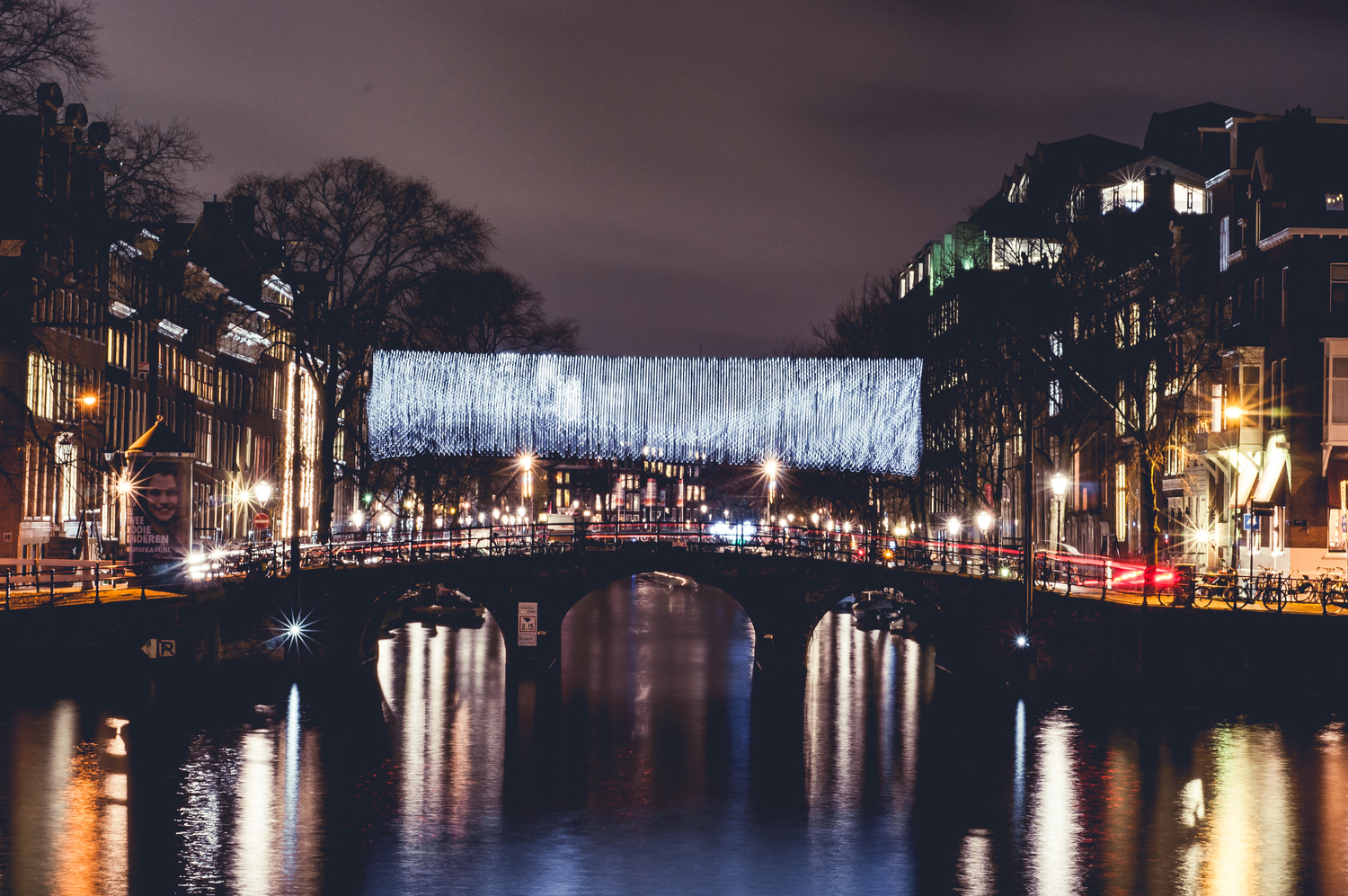
Sea sparkles
In summer time, sea sparkles (bioluminescent organisms) come together along the Dutch coast line. Millions of sea sparkles collide in moving water, producing a chemical reaction which results in a greenish/bluish light. Lightwaves is an interactive installation that mimics the bioluminescent behaviour of these (tiny) animals. In this installation, the light is activated by wind, instead of water. Airstreams demonstrate themselves as waves, producing a light effect in a semi-transparent veil of thousands of LEDs, which capture the - otherwise invisible - airstreams.
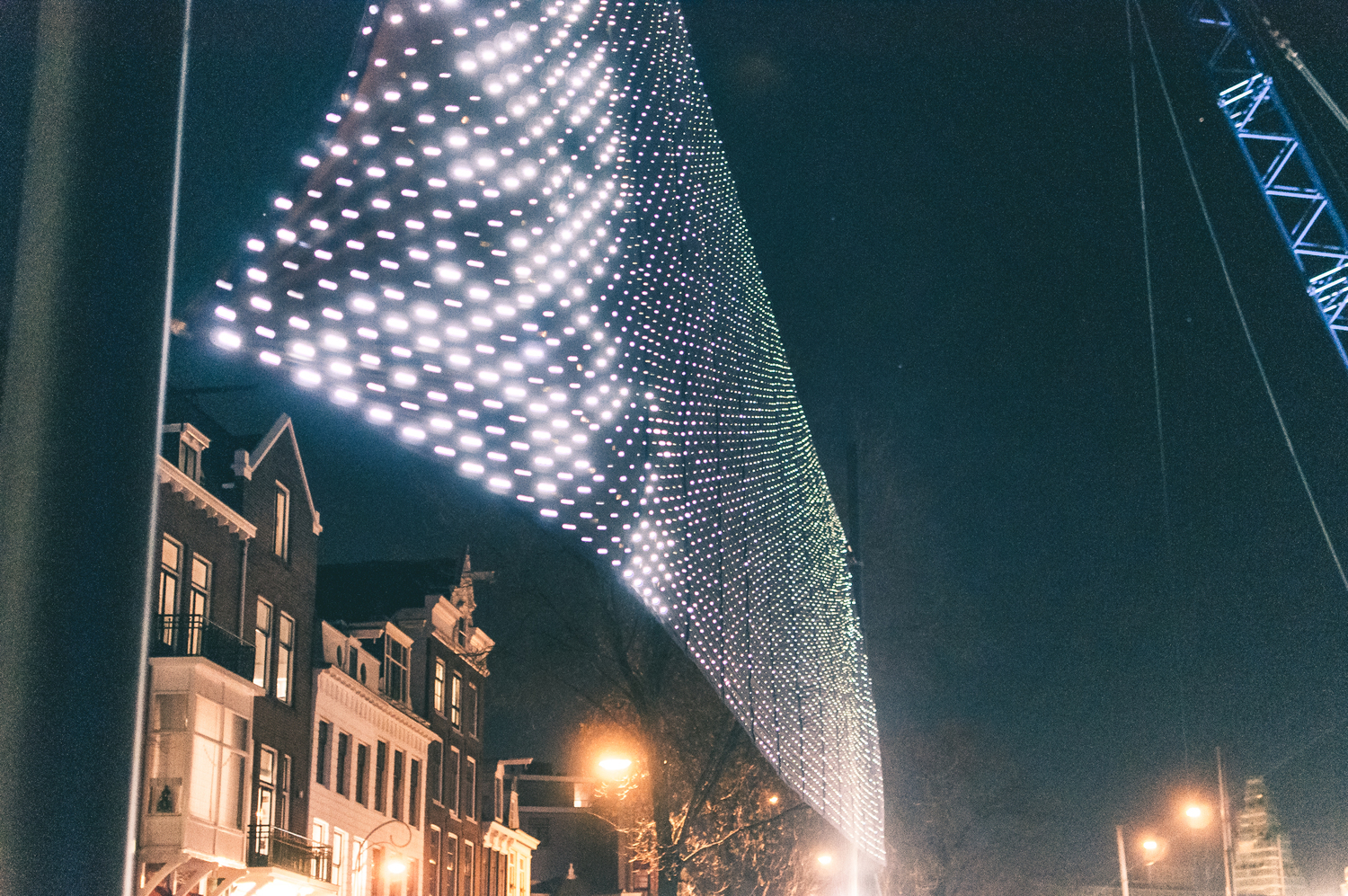

New types of architecture
The artwork is just as unpredictable as the Dutch weather. The installation responds to the ever-changing local wind conditions. Patterns of light dance above the canals, making the whirling airstreams visible. Where natural phenomena are usually something humans want to protect themselves against - with air conditioning, heating and windshields, Lightwaves shows that natural phenomena can be used to develop new types of architecture.
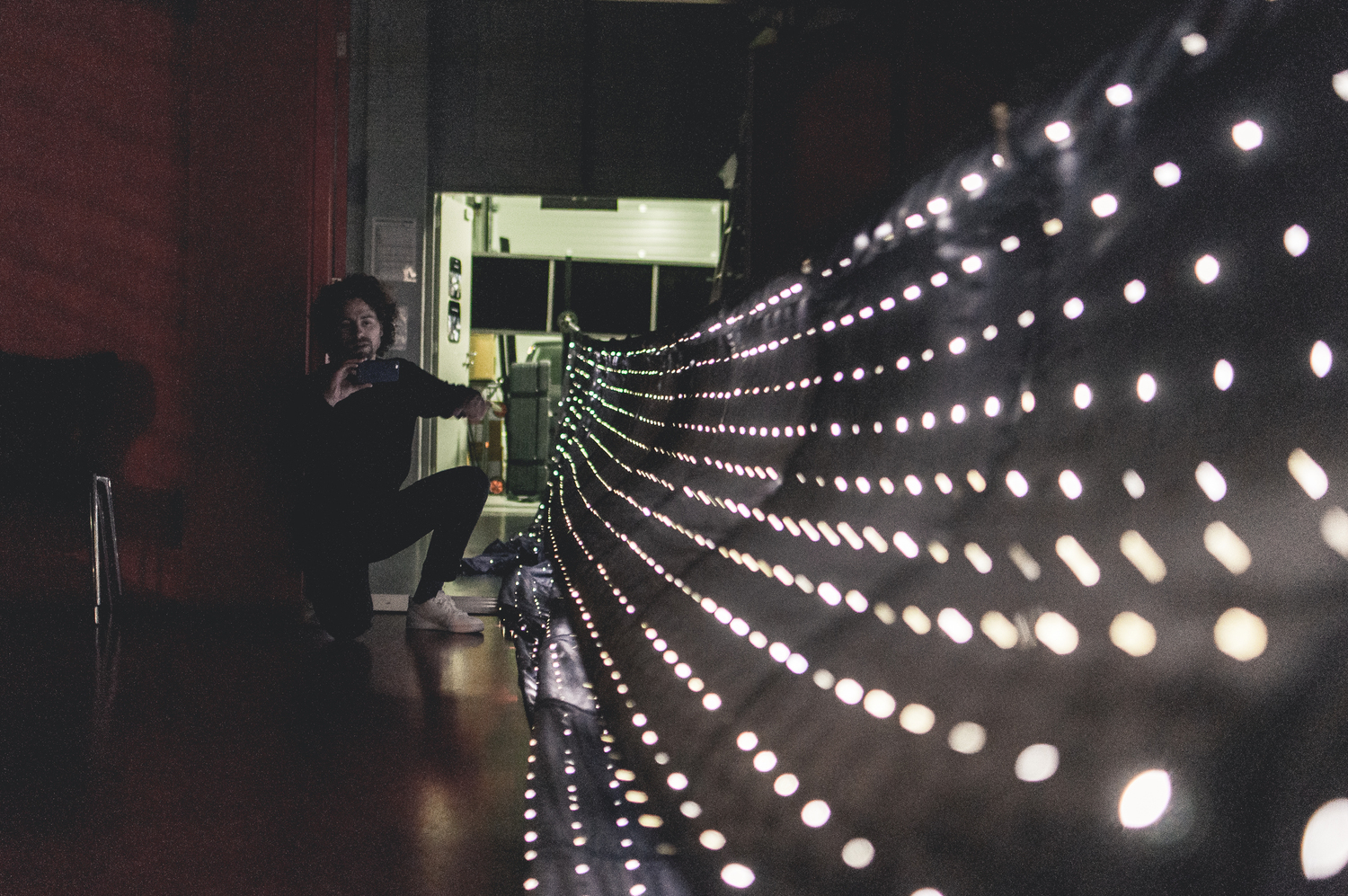
3300 LED lights
The material for the artwork was created in collaboration with Swiss textile manufacturer Forster Rohner, known for textile innovations for fashion houses Dior and Balenciaga. The flowing translucent fabric is made of cloth used for flags, so it can withstand different kinds of weather. In total, the veil consists of eighty-four square meters of fabric (four meters high and twenty meters long) with more than three thousand LED lights.
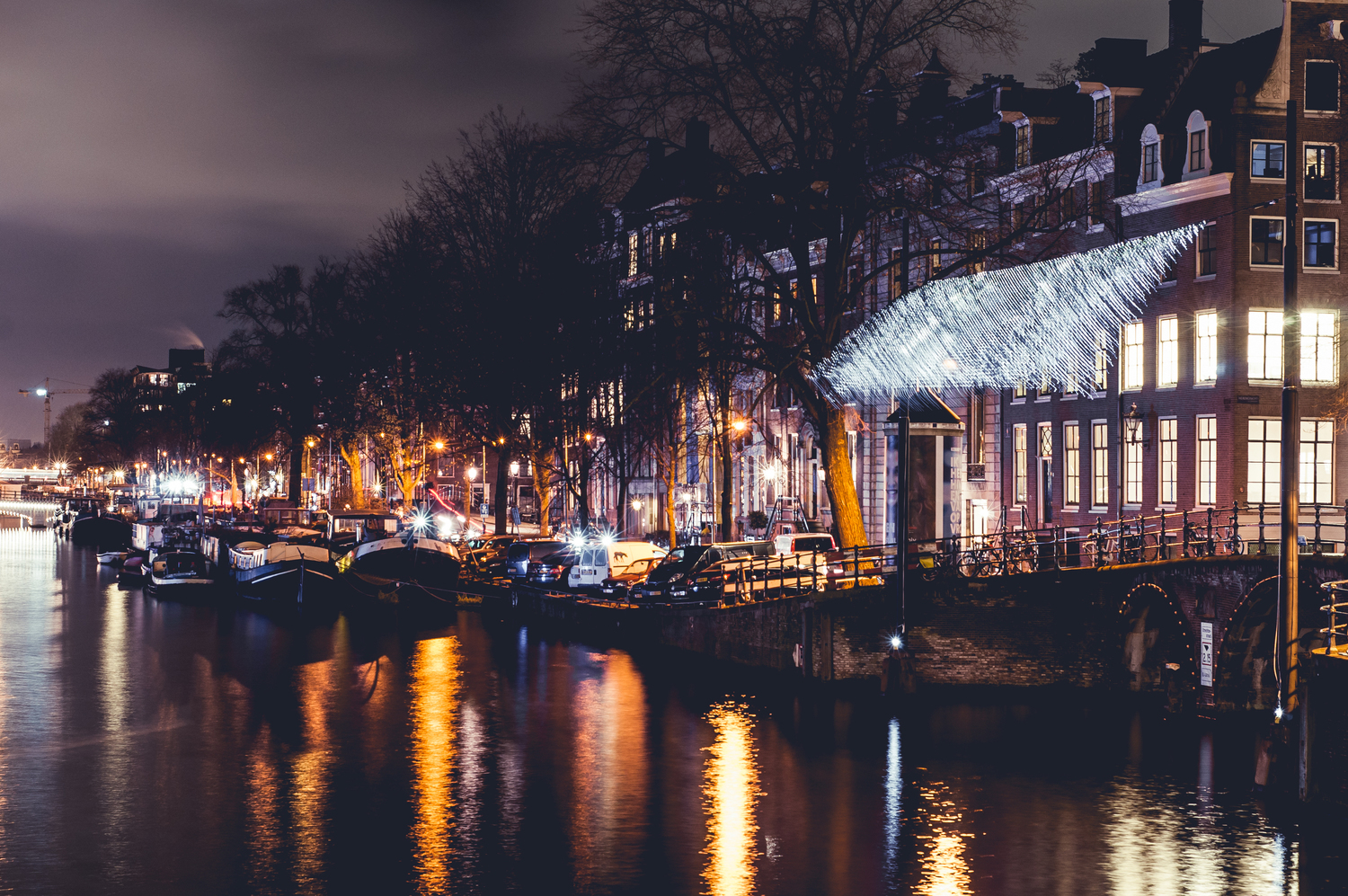
Forces for Architecture
Light Waves is a project of Forces for Architecture, a research lab established in 2015 by designer Jólan van der Wiel and Benthem Crouwel Architects. This lab examines how natural phenomena can serve their built environment. Lightwaves is one of the results of this lab.
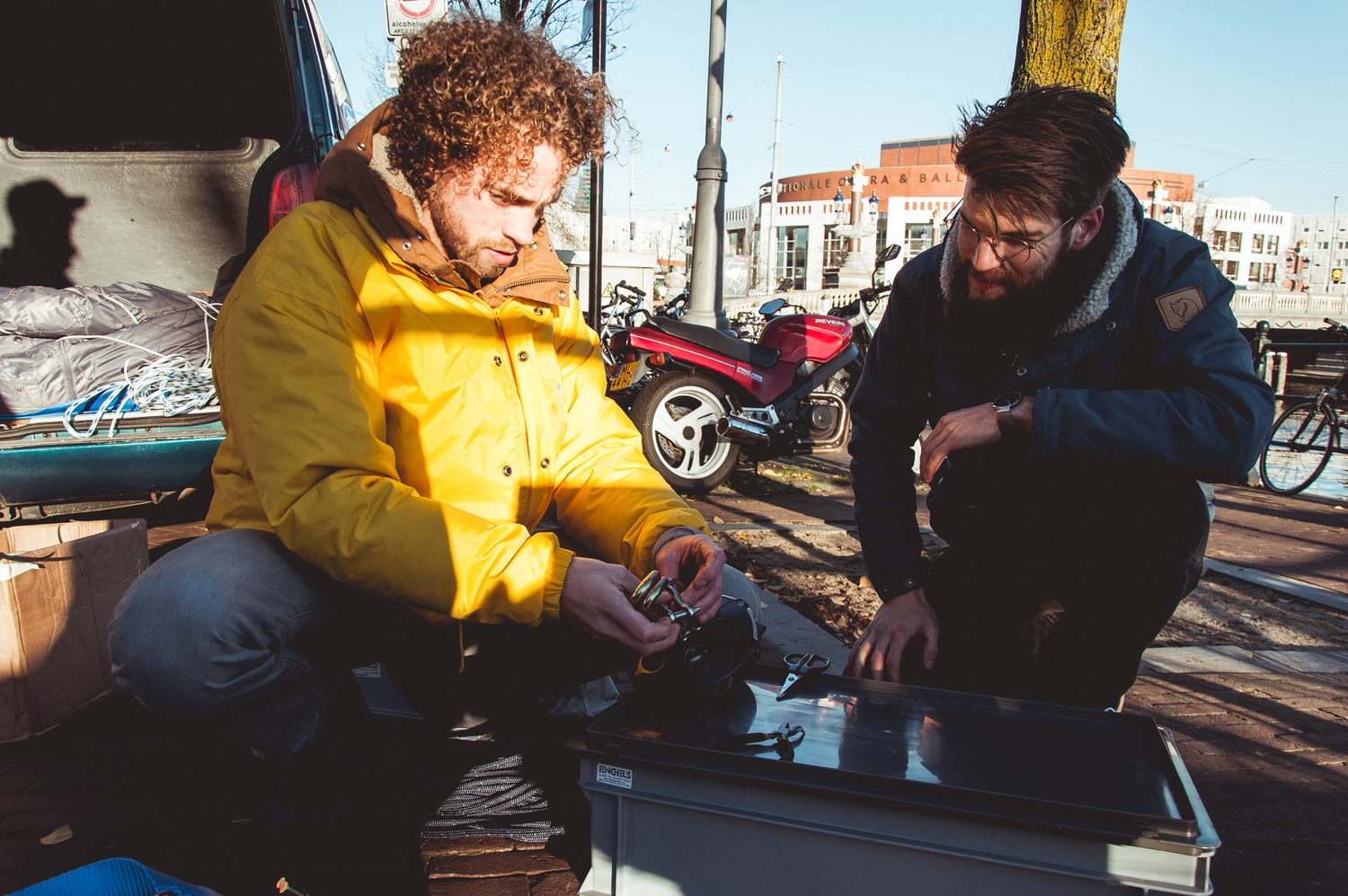
Jólan van der Wiel
Designer Jólan van der Wiel makes invisible physical forces visible in various objects and artworks. One of his best known works is Gravity Stool, which owes its unique shape to the interaction between magnetic fields and gravity.
A glimpse into Lightwaves experimental development process

